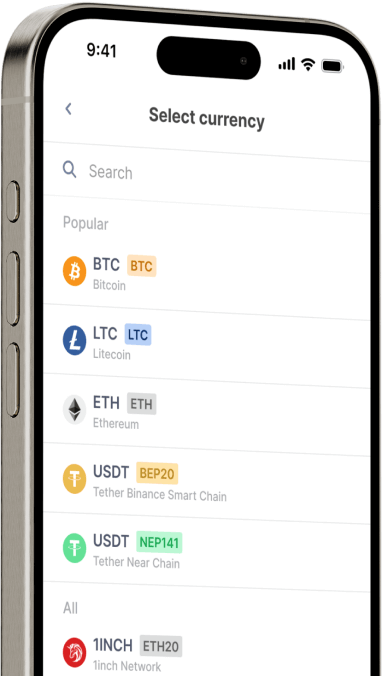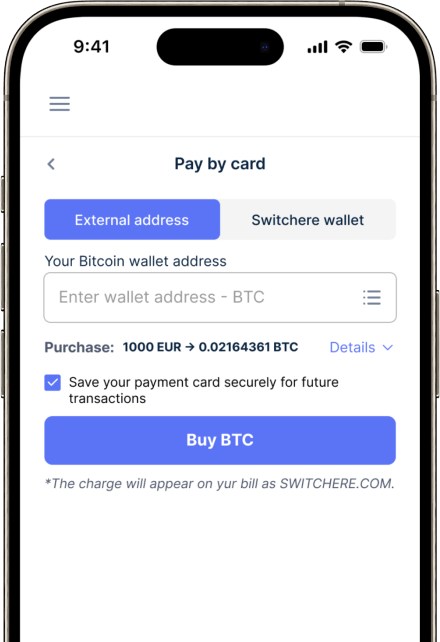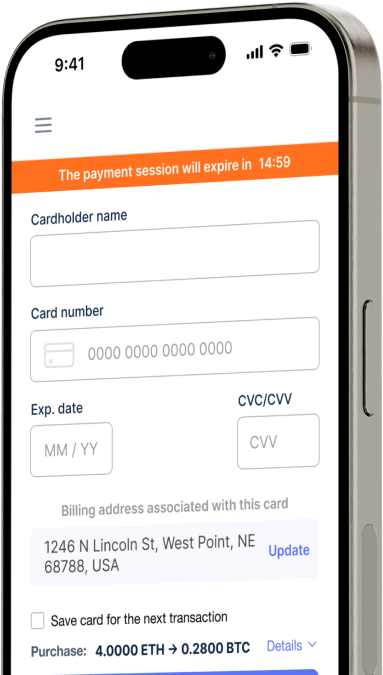Convert
Peruvian Sol (PEN) to Chromia (CHR) Instantly
Purchase Chromia (CHR) with Peruvian Sol (PEN) easily at Switchere and benefit from fast, secure transactions.
About
Chromia (CHR)
Chromia (CHR) is a relational blockchain platform designed to enable a new generation of decentralized applications (dApps) by addressing the scalability, data handling, and developer experience challenges prevalent in earlier blockchain infrastructures. Unlike traditional smart contract platforms that use a virtual machine, Chromia integrates the security of a blockchain with the flexibility and efficiency of a relational database. This unique architecture, built on the Postchain framework, allows for more complex data structures and queries to be managed directly on-chain, making it a highly suitable Web3 infrastructure for data-intensive applications like enterprise systems, social media, and advanced gaming.
The core of Chromia's innovation lies in its custom programming language, Rell, which is designed to be highly secure and easy for developers familiar with SQL to learn. This focus on a developer-friendly environment aims to accelerate the creation of sophisticated dApps. The network operates on a Byzantine Fault Tolerance (BFT) consensus mechanism, with dApps running on their own dedicated sidechains, ensuring high throughput and low latency. The native utility token, CHR, is central to the ecosystem's tokenomics. It is used by dApps to pay for hosting fees, staked by node providers to guarantee security, and acts as a standard currency within the Chromia digital asset economy.
Buy Other 150+ Cryptocurrencies for Peruvian Sol (PEN)
Other Coins for Peruvian Sol (PEN)
-
PEN to ZRX
-
PEN to 1INCH
-
PEN to AAVE
-
PEN to ACH
-
PEN to ALGO
-
PEN to TLM
-
PEN to ANKR
-
PEN to APE
-
PEN to NFT
-
PEN to API3
-
PEN to APT
-
PEN to ARPA
-
PEN to AUDIO
-
PEN to AVAX
-
PEN to AVAX
-
PEN to AXS
-
PEN to BADGER
-
PEN to BAL
-
PEN to BNT
-
PEN to BAT
-
PEN to BNB
-
PEN to BSW
-
PEN to BSV
-
PEN to BLUR
-
PEN to BONE
-
PEN to CTSI
-
PEN to CELR
-
PEN to CELO
-
PEN to CEL
-
PEN to LINK
-
PEN to CHZ
-
PEN to CHR
-
PEN to C98
-
PEN to COMP
-
PEN to CFX
-
PEN to PEOPLE
-
PEN to CVX
-
PEN to ATOM
-
PEN to CTC
-
PEN to CRV
-
PEN to DAI
-
PEN to DASH
-
PEN to MANA
-
PEN to DENT
-
PEN to DGB
-
PEN to DYDX
-
PEN to XEC
-
PEN to EOS
-
PEN to ETC
-
PEN to ENS
-
PEN to ETHW
-
PEN to FET
-
PEN to FIL
-
PEN to FLOKI
-
PEN to GALA
-
PEN to GNO
-
PEN to ONE
-
PEN to HBAR
-
PEN to HOT
-
PEN to HOOK
-
PEN to ICX
-
PEN to ILV
-
PEN to IMX
-
PEN to INJ
-
PEN to ICP
-
PEN to IOST
-
PEN to IOTX
-
PEN to JASMY
-
PEN to JST
-
PEN to KAVA
-
PEN to KCS
-
PEN to KSM
-
PEN to KNC
-
PEN to LDO
-
PEN to LQTY
-
PEN to LPT
-
PEN to LOOKS
-
PEN to LRC
-
PEN to LUNA
-
PEN to MKR
-
PEN to MASK
-
PEN to EGLD
-
PEN to ALICE
-
PEN to NEAR
-
PEN to XEM
-
PEN to NEXO
-
PEN to NOT
-
PEN to NMR
-
PEN to OKB
-
PEN to OMG
-
PEN to ONT
-
PEN to EDU
-
PEN to OP
-
PEN to OGN
-
PEN to CAKE
-
PEN to PAXG
-
PEN to PENDLE
-
PEN to DOT
-
PEN to POL
-
PEN to QTUM
-
PEN to QNT
-
PEN to RDNT
-
PEN to XRD
-
PEN to RVN
-
PEN to REN
-
PEN to RSR
-
PEN to RLC
-
PEN to RPL
-
PEN to SFP
-
PEN to SHIB
-
PEN to SKL
-
PEN to SXP
-
PEN to STND
-
PEN to STG
-
PEN to XLM
-
PEN to GMT
-
PEN to STORJ
-
PEN to STMX
-
PEN to SUSHI
-
PEN to SNX
-
PEN to USDT (Polygon)
-
PEN to USDT (AVAC)
-
PEN to USDT (BEP20)
-
PEN to USDT (ERC20)
-
PEN to USDT (SPL)
-
PEN to USDT (NEP141)
-
PEN to USDT (FA2)
-
PEN to USDT (TRC20)
-
PEN to USDT (JETTON)
-
PEN to XTZ
-
PEN to GRT
-
PEN to SAND
-
PEN to TFUEL
-
PEN to THETA
-
PEN to RUNE
-
PEN to TON
-
PEN to TUSD (BEP20)
-
PEN to TUSD (TRC20)
-
PEN to TWT
-
PEN to UOS
-
PEN to UMA
-
PEN to UNI
-
PEN to USDC (Polygon)
-
PEN to USDC (SPL)
-
PEN to USDC (OP)
-
PEN to USDC (BEP20)
-
PEN to USDC (AVAC)
-
PEN to USDC (ARB)
-
PEN to USDC (ERC20)
-
PEN to VET
-
PEN to VRA
-
PEN to WAXP
-
PEN to WOO
-
PEN to WLD
-
PEN to WBTC
-
PEN to WMINIMA
-
PEN to XDC
-
PEN to YFI
-
PEN to YGG
-
PEN to ZIL
How to Buy Chromia (CHR)
Frequently Asked Questions
-
What is the most effective method for purchasing Chromia (CHR) with Peruvian Sol (PEN)?
The most common method to buy CHR with PEN is through a cryptocurrency exchange that serves as a fiat on-ramp for the Peruvian market. Users typically need to complete a KYC/AML verification process, then deposit PEN via a local bank transfer or payment service. Once the fiat deposit is credited, you can place an order on the CHR/PEN order book or convert PEN directly to the CHR digital asset.
-
After converting PEN to CHR, what are the best practices for secure storage and use?
For secure trading and storage, it is highly recommended to move your CHR tokens from the exchange to a personal digital wallet where you control the private keys. Options include hardware wallets for maximum security or reputable software wallets. Once secured, your CHR tokens can be used for staking to support network provider nodes or to interact with various decentralized applications built on the Chromia ecosystem, such as games or NFT platforms.
-
What kind of fees can I expect when executing a PEN to CHR blockchain transaction?
The process involves several potential fees. First, a deposit fee for funding your exchange account with PEN, which varies by payment method. Second, a trading fee on the cryptocurrency exchange, typically a small percentage of the transaction value. Finally, when you move your CHR to a private digital wallet, there will be a network withdrawal fee. Chromia's own blockchain transaction fees, used within its dApp ecosystem, are designed to be low and predictable for users and developers.
-
What technical features make Chromia (CHR) a unique relational blockchain for dApps?
Chromia's core innovation is its relational blockchain architecture, which models data similarly to a traditional database. This is powered by its custom programming language, Rell, designed for efficiency and developer-friendliness. This structure allows for complex data management and querying directly on-chain, making it highly suitable for scalable decentralized applications (dApps), particularly in on-chain gaming and enterprise sectors, differentiating it from standard Layer-1 solutions.
-
Are there specific regulatory or KYC hurdles for trading PEN/CHR in the LATAM market?
Yes, any fiat gateway facilitating PEN to CHR transactions must adhere to strict KYC/AML compliance. For users in Peru and the broader LATAM region, this means providing government-issued identification (like a DNI) and potentially proof of address. These measures are standard for regulated exchanges to prevent illicit activities and ensure a secure trading environment when purchasing a digital asset with fiat currency.
-
How does Chromia's Postchain framework improve upon traditional blockchain models?
Chromia's Postchain framework is a modular technology that allows each dApp to have its own dedicated sidechain, which is then anchored to a main directory chain. This architecture combines the security of a public blockchain with the performance and flexibility of a private database. It enables high transaction throughput and allows for custom fee and governance structures per dApp, providing a more efficient and customizable environment than monolithic Layer-1 blockchains.




